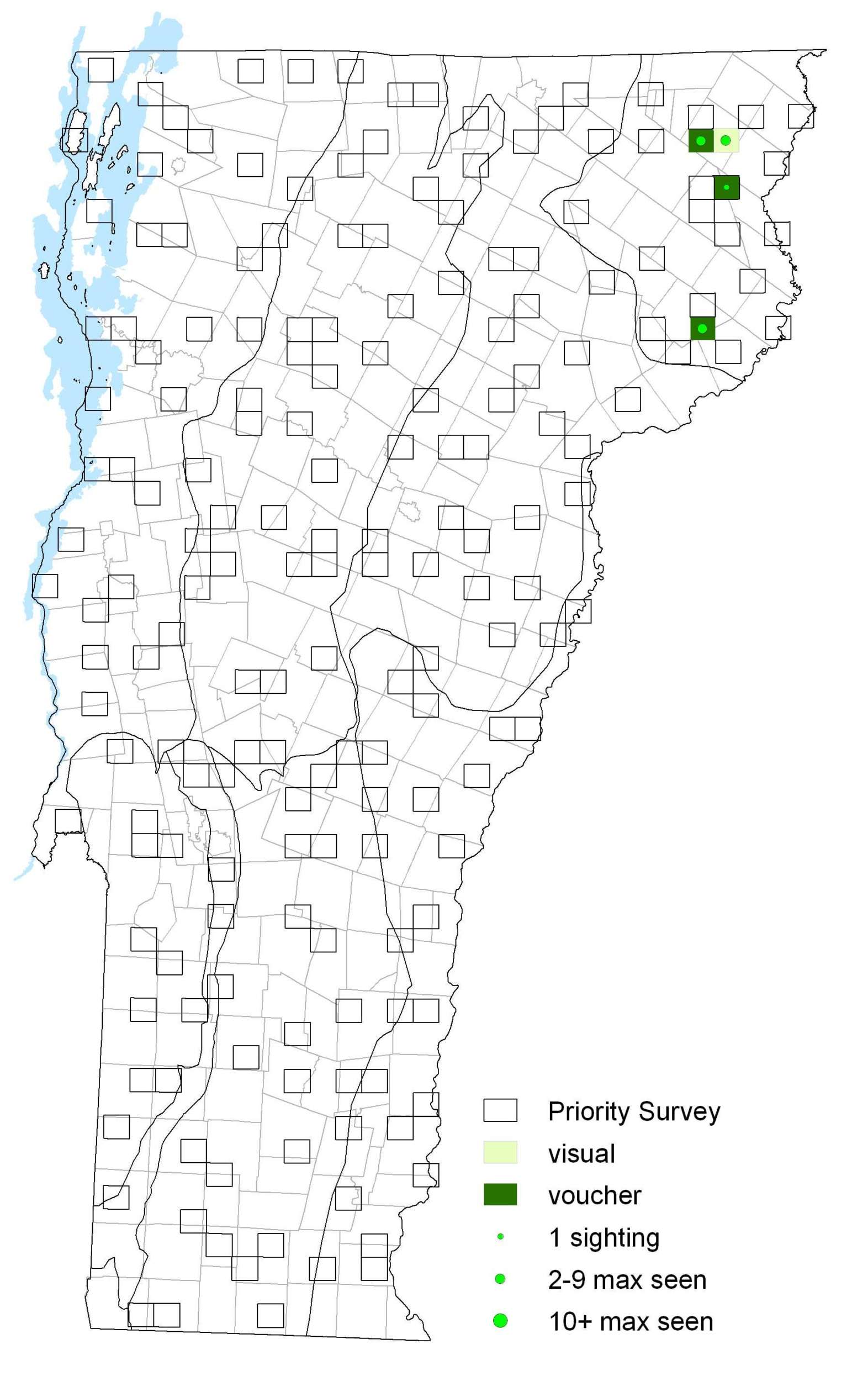|
Resident Conservation Status North American Range |
The southern edge of its range is comprised of a few black spruce bogs in the Northeastern Highlands of Vermont. Males often perch on tree trunks, logs and other vegetation and periodically patrol for mates. If disturbed they fly very fast around and into stands of trees and almost never into the open bog, often returning to the same. With folded wings, it resembles lichen. There are eight weakly differentiated subspecies in North America, with ascerta found in Vermont.
Identification
Large for an Arctic. Upperside is gray-brown. Both wings have a broken yellow-orange submarginal band surrounding 2-4 black spots. Underside of hindwing is mottled brown and gray with an obscure median band.
Flight
One brood. Extreme dates: 24 May 1998 in Ferdinand (S. Griggs), 29 May 2007 in Victory (B. Pfeiffer), and 16 June 1996 in Ferdinand (J. Hedbor).
Distribution and Habitat
A colony was first discovered in Vermont in Moose Bog WMA, Ferdinand on 3 June 1989 (D.H. Miller). During VBS two additional colonies were found in Victory Bog WMA in Victory (B. Pfeiffer) and Mollie Beattie Bog in Lewis (S. Holt). Restricted to the Black Spruce bogs in the Northeast Highlands of Vermont, hostplants are Dense Cottongrass (Eriophorum spissum), Carex geyeri, and C. concinna. Adults nectar at bog flowers such as Labrador Tea (Ledum groenlandicum).






